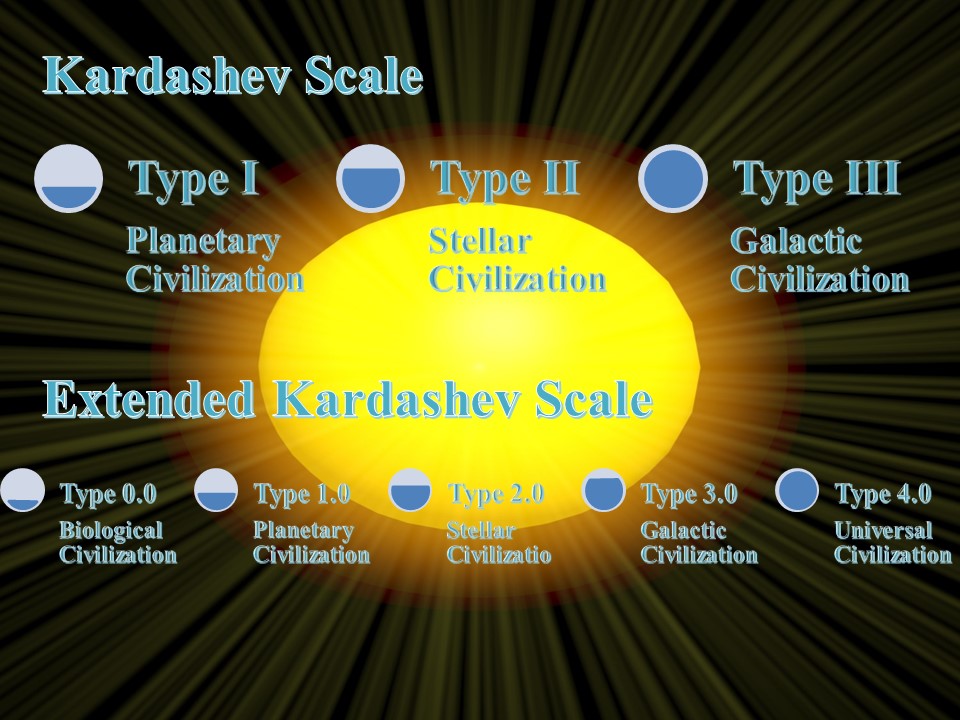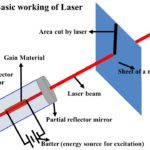Have you ever wondered about how far humans have evolved as a species? Or have you wondered where we stand as an intergalactic civilization if we were to find more civilization in the universe? Or better yet, have you wondered what would more advanced civilizations in the universe will be capable of doing?
The answer to these questions lies in the Kardashev scale developed by Nikolai Semyonovich Kardashev, a Russian astrophysicist and astronomer. Various scientists have amended this scale countless times, but the basic Kardashev scale remains the same.
The Kardashev scale
The scale provides a method for quantifying the level of civilization by simply employing the amount of energy that civilization utilizes from its parent star (the Sun for the case of humans residing on Earth). The formula Kardashev proposed takes into account the average power consumption (P) of civilization in W (Watts) as shown below.
Which can also be represented as the equation (2).
This equation yields a fractional number. The result shows the level of the civilization in question. Depending upon the result a civilization can be divided into three further categories, i.e., Type I (Kp number 1 or greater), Type II (Kp number 2 or greater), and Type III (Kp number 3 or greater), which will be discussed in the next sections.
According to energy reports for 2019 and 2020, the world’s energy consumption (Ej) was 581.51 and 557.10 Exajoules (1018 Joules), respectively. If we need to calculate the total average power consumption (Pav) in watts, we first need to convert this energy into other units involving watt-hour (Ewh). After that, we can calculate the average power consumption by dividing the result by the number of days in a year and then the total number of hours in a day. The formulas given in equations 3 and 4 can be applied subsequently if energy consumption in a year (Ej) is known. The equation (3) converts energy in joules (equal to watt/second) to energy in watt-hour (Wh) by dividing the Ej by 3600 (converting seconds to minutes and then into hours).
After getting energy in Wh, we can calculate average power consumption (Pav) by dividing Ewh by 365 days and 24 hours (365 x 24 = 8760).
After these calculations, we can calculate the Kp for a given year. It can be observed from the calculations that in the year 2019, the average power consumption was 18.4396 Tera-watts (TW) and therefore, the Kp of the world was around 0.7266. Due to the global pandemic in the year 2020, the average power consumption fell to around 17.6655 TW, which corresponds to a Kp of around 0.7247. For the year 2022, we are estimating the energy consumption to be around 580 Exajoules range, which will make us achieve a Kp of 0.7266.
In light of these results, at present, we have not even reached the civilization status of Type I. To achieve this status, we can take a Kp of 1 and find the corresponding Pav, which comes out to be 1016 W. Similarly for Type II civilization status, we would require to harness 1026 W and for Type III civilization status we need 1036 W.
Up until now, we have discussed the types of civilizations, but we do not know what these types of civilizations could do. To know this, let’s see what each of these types of civilizations is capable of achieving.
Type I civilization or Type 1.0 planetary civilization (Power >= 1016 W)
This type of civilization could in essence capture all of the energy from its parent star that is available on its planet which is why this civilization is also regarded as planetary civilization. Human beings can essentially achieve this status by harnessing all of the enerrgy from the Sun, which is approximately 17.3 x 1016 W. This is 17 times more than the minimum requirement of a Type I civilization. Technically speaking, the previously mentioned Kp number (0.7266) for Earth is an exaggeration since that number does not fully encompass energy consumption from the Sun. We are relying on many other non-renewable energy sources as well.
Type II civilization or Type 2.0 stellar civilization (Power >= 1026 W)
This civilization would be able to capture all of its parent star’s energy which is why it is also termed a stellar civilization. Our parent star, the Sun, produces around 3.846 x 1026 W. If we are able to capture even 1/3 of this energy we would be able to achieve Type II civilization status. This type of civilization will definitely put something like a Dyson sphere over its parent planet and for that purpose, interplanetary travel would be required. If such a Dyson sphere is not possible, this civilization might be able to harness multiple parent stars in nearby locations to their home planet.
Type III civilization (Power >= 1036 W)
This civilization would be able to capture energy from the entire galaxies and this is the reason why this civilization is called galactic civilization. Even in our own milky way, there are about1.5 trillion stars like the Sun, that is 1,500,000,000,000 Suns. We can capture around 1.5 x 1038 W from our galaxy (considering our Sun the average of all the stars in our milky way). This Type III civilization might also be able to capture energy from other elements such as black holes, dark matter, white holes, etc.
Other variants of the Kardashev scale
There are many other variants of the Kardashev scale but a natural extension can be made by finding power consumption when Kp is 0. At Kp = 0, the power consumption comes out to be 1 megawatt (mW). Since some of the larger animals in the world (such as blue whales) have metabolic rates reaching half of an mW, this scale cannot be considered to be civilization 0. The civilization type 0.0 status is now set at our Kp value in 2015, which is roughly 0.72. At this point, the power consumption is around 1.7 x 1013. Then another natural extension of the Kardashev scale can be extended to civilization type 4.0. This type of civilization will have a consumption of 1046. This means that this civilization will be able to harness energy across the entire visible universe. In this scale, Type I civilization is presented as Type 1.0 biological civilization, Type II civilization is presented as Type 2.0 stellar civilization, and Type III civilization is represented as Type 3.0 galactic civilization. The Kardashev and extended Kardashev scales are shown in Figure 1.

The natural extension of the Kardashev scale
- Type 0.0 Biological civilization (Power >= 1.7 x 1013 W)
- Type 1.0 Planetary Cvilization (Power >= 1016 W)
- Type 2.0 Stellar Civilization (Power >= 1026 W)
- Type 3.0 Galactic Cvilization (Power >= 1036 W)
- Type 4.0 Universal Civilization (Power >= 1046 W)
Apart from these, many more civilizations scales have been introduced with many more types, but those scales are much too unrealistic. Such as there might be a type of civilization that could control power across variable universes, or maybe write their own laws of physics.
Further reading
If you liked this post you might be interested in reading the following posts.







